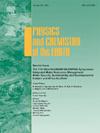Coupled effect of orography and rainfall on canopy heights in the Western Ghats and Meghalaya Plateau of India
IF 3
3区 地球科学
Q2 GEOSCIENCES, MULTIDISCIPLINARY
引用次数: 0
Abstract
The Western Ghats and Meghalaya Plateau in India act as orographic barriers to incoming moisture from the Arabian Sea and the Bay of Bengal during the Indian Summer Monsoon (ISM), respectively, causing some of the highest global rainfall rates on their windward sides. Here, we investigate links between topographic parameters (elevation, hillslope, and relief) and rainfall distribution and the impact of the coupled topography-rainfall system on the vegetation height along these two barriers, which has not been studied previously. We use satellite-retrieved (TRMM) and gauge-interpolated (IMD) rainfall datasets along with spaceborne-LiDAR derived canopy height measurements. In both regions, the occurrence of orography-induced peak rainfall does not co-locate with the highest elevation; rather, rainfall peaks are usually at ∼750 m (±250 m) altitude for both regions, being situated about 25–30 km windward of their elevation peaks. The forced orographic lifting at these elevations is sufficient to create rainfall maxima. In the Western Ghats, rainfall peaks correlate with high topographic relief, but this relation varies in magnitude along the strike from south to north. Local mountain passes (Thalghat and Palghat Gaps) in the Western Ghats allow moisture movement further inland. The elevated central Meghalaya Plateau shows a stronger orographic control that induces higher rainfall. Rainfall distribution is primarily determined by these orographic barriers and their orientation to the prevailing wind direction. Topography-induced rainfall gradients significantly influence the canopy height and cause higher canopy clusters around rainfall peaks. We also delineate distinct homogenous zones to indicate the different topoclimatic-vegetation responses within these two regions.

印度西高止山脉和梅加拉亚高原地形和降雨对冠层高度的耦合效应
在印度夏季风(ISM)期间,印度的西高止山脉和梅加拉亚高原分别作为阻挡来自阿拉伯海和孟加拉湾的湿气的地形屏障,在它们的迎风面造成了全球最高的降雨量。在这里,我们研究了地形参数(海拔、坡度和地形起伏)与降雨分布之间的联系,以及地形-降雨耦合系统对这两个屏障沿线植被高度的影响,这是以前没有研究过的。我们使用卫星检索(TRMM)和量规插值(IMD)降雨数据集以及星载激光雷达衍生的冠层高度测量。在这两个地区,地形诱导的峰值降雨量的发生与最高海拔并不在同一位置;相反,这两个地区的降雨峰值通常在海拔约750米(±250米)处,位于海拔峰值的风向约25-30公里处。在这些海拔高度的强迫地形抬升足以产生最大降雨量。在西高止山脉,降雨峰值与高地形起伏相关,但这种关系在从南到北的打击幅度上有所不同。西高止山脉的当地山口(塔尔盖特和帕尔盖特峡谷)允许水分进一步向内陆移动。梅加拉亚高原中部的抬升显示出更强的地形控制,导致了更高的降雨量。降雨分布主要取决于这些地形障碍及其对盛行风向的朝向。地形诱导的降雨梯度对冠层高度有显著影响,并在降雨峰值附近形成较高的冠层簇。我们还划分了不同的同质带,以表明这两个区域内不同的地形气候-植被响应。
本文章由计算机程序翻译,如有差异,请以英文原文为准。
求助全文
约1分钟内获得全文
求助全文
来源期刊

Physics and Chemistry of the Earth
地学-地球科学综合
CiteScore
5.40
自引率
2.70%
发文量
176
审稿时长
31.6 weeks
期刊介绍:
Physics and Chemistry of the Earth is an international interdisciplinary journal for the rapid publication of collections of refereed communications in separate thematic issues, either stemming from scientific meetings, or, especially compiled for the occasion. There is no restriction on the length of articles published in the journal. Physics and Chemistry of the Earth incorporates the separate Parts A, B and C which existed until the end of 2001.
Please note: the Editors are unable to consider submissions that are not invited or linked to a thematic issue. Please do not submit unsolicited papers.
The journal covers the following subject areas:
-Solid Earth and Geodesy:
(geology, geochemistry, tectonophysics, seismology, volcanology, palaeomagnetism and rock magnetism, electromagnetism and potential fields, marine and environmental geosciences as well as geodesy).
-Hydrology, Oceans and Atmosphere:
(hydrology and water resources research, engineering and management, oceanography and oceanic chemistry, shelf, sea, lake and river sciences, meteorology and atmospheric sciences incl. chemistry as well as climatology and glaciology).
-Solar-Terrestrial and Planetary Science:
(solar, heliospheric and solar-planetary sciences, geology, geophysics and atmospheric sciences of planets, satellites and small bodies as well as cosmochemistry and exobiology).
 求助内容:
求助内容: 应助结果提醒方式:
应助结果提醒方式:


